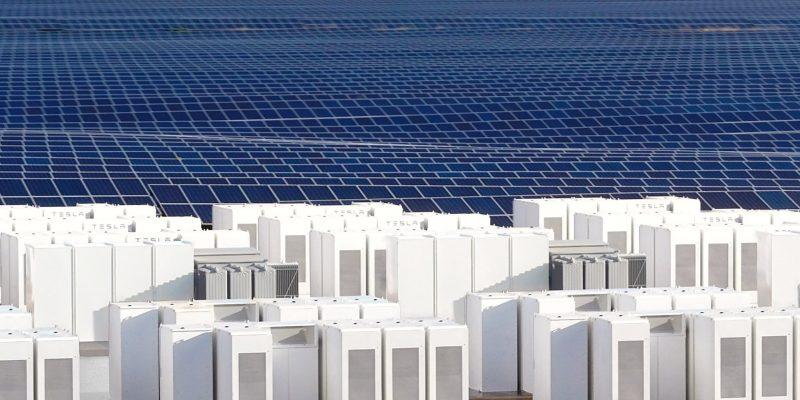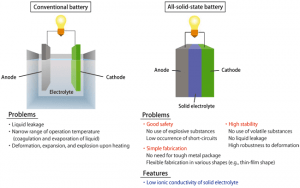
- October 17, 2020
- By admin_panel
- Comments 0
Energy Saved is Energy Produced
(The future of energy storage)
The source of usable power, Energy, drives our world. Nature has provided us with myriad resources, allowing us to play and experiment with them according to our convenience. We have the liberty to use them at our disposal. However, the greed of man has pushed the limits of these resources to the brink. Affordable and Clean Energy is now a luxury, so we must find efficient ways of storing energy for long-lasting, sustainable usage.
After listening to Tesla’s ground-breaking announcements on its ‘Battery Day’ that was held on the World Energy Storage Day (i.e. 22 September 2020), we could not think of a better time to discuss where the world is headed in terms of energy storage.
While the pioneer in battery and e-vehicles space has announced lowering the battery cost along with scaling up the battery performance and production, are there more options available when it comes to sustainable energy? Yes, scientists and companies around the globe are working towards options future batteries that provide clean energy and are sustainable. Let us discover in the below section some of these buzzing solutions along with the patents published in the given space.

Solution# 1 – The Microscopic Pirate
Viruses are as tricky as they are tiny. Did you know that Viruses can help us in forming future batteries? A pioneering team at Massachusetts Institute of Technology (MIT) has been working on this project for quite some time now. Angela Belcher (the R&D head) gave a TedTalk in which she talks about her dream to drive a virus-powered car. She mentions how an abalone shell inspired her to discover one of the most interesting uses of the virus. The MIT team is currently working on M13 bacteriophage.
Susan Hockfield, former president of MIT and author of the book, The Age of Living Machines, in a podcast interview with MIT – “Angie (Angela Belcher) set about trying to persuade viruses to evolve batteries, to manipulate viruses to bind to the inorganic materials of batteries, the metals. She developed—using a lab strain of virus, the M13 virus—she developed a number of variants that can organize the materials of batteries. She has one strain of virus that will build an anode and another strain of virus that will build a cathode and she builds batteries that don’t really look like much because she packages them in coin cell casing so they look just like the coin cell batteries that you’d buy that would have the standard kind of components.”
An important factor that matters here is the kind of metal to which these engineered viruses will attach. Scientists have been successful in synthesizing batch of viruses which can adhere to Cobalt Oxide and Manganese Oxide. The team is currently working on making Lithium-Air batteries (LiO2). This kind of battery if made can store 10 times the energy stored by a lithium-ion battery. This technology also sets the right precedent for clean energy. Neurosciences Institute is also a part of this project. Konstantinos Gerasopoulos, a senior research scientist who works on advanced batteries at Johns Hopkins Applied Physics Laboratory says “The benefit of using biological materials, such as viruses, is that they already exist in this ‘nano’ form, so they are essentially a natural template or scaffold for the synthesis of battery materials.”
Solution# 2 – Energy Storage using Gravity
How can gravity be used to store energy? Edinburgh based company ‘Gravitricity Ltd.’ has come up with a technique that answers this question. Like Lithium-ion batteries, energy stored using gravity provides fast responses but unlike batteries, it can be charged and uncharged multiple times a day for the next fifty years with zero degradation. This will ensure providing energy services at an affordable price. An analysis by Imperial College London supported the company’s claim that gravity energy storage was more cost-effective than current alternatives as well as being cleaner and having greater longevity. The latest patent published by Gravitricity Limited is the ‘Gravity-Based energy storage system’ (Patent Number- GB2578805A). The patent explains a multi-weight gravity-based energy storage system. The diagram below explains this method briefly. If this method proves to be successful, Gravitricity can provide the most used storage form in the future.

Solution# 3 – Solid-State Battery
The first lead-acid battery was built by the French Physicist, Gaston Planté in 1859. We have come a long way since then. We have been coming up with many new inventions in our research labs. However, the sad truth is these inventions will remain in the lab until a good energy storage option is provided to them. For instance, the robotic dog ‘Spot’ lasts charged for only 90 minutes. Similarly, electric vehicles are the new trend. Therefore, we will need a better energy storage option to power innovations of the future. This is where solid-state batteries come in. These are different than the liion batteries as the electrolytes used in here is in solid-state. They are believed to outperform the liion batteries. Solid-State batteries are also proved to be safer than li-ion batteries as they do not form dendrites on heating and hence, the probability of the battery catching fire is decreased exponentially. Genki Nogami et al from Japan have recently got their patent (Number- JP2020064864A) on solidstate battery published. The patent aims to provide an all-solid-state battery that has high ionic conductivity and good stability. Another patent (CN111370756A) from China by Mr. Ning describes how a high voltage solid state battery can be prepared. The research in this field has been going on for a long time now, but the real question is – Is 2020 the year of solid-state batteries? In Oct 2019, Toyota revealed an e-pallette self-driving shuttle that ran on solid-state batteries. This self-driving shuttle was to be used in the 2020 Olympic Games. With the progress slowed down by COVID-19 pandemic, the mass production of solid-state batteries seems a bit far in time.

Figure 3 – Differences between li-ion batteries and solid-state batteries
Solution# 4 – Anode-Free Li Metal Batteries
Stanford University is working towards a battery design involving electrolytes that enable anode-free Li metal batteries with single-solvent single-salt formations at standard concentrations. The results of experiments performed using these batteries were mind-boggling. The battery retained 90 percent of its initial charge even after 420 cycles of charging and discharging. However, a typical lithium metal battery stops working after approximately 30 cycles. University claims that this design provides a promising path to high-energy, long-cycling Li metal batteries. This also has the potential to increase the driving range of electric cars.
Solution# 5 – Battery Storage Using Wind and Solar Power
Elon Musk’s Battery Farms situated in Hornsdale Wind Farm, South Australia have not just changed the life of Australians but also changed the world in terms of renewable energy storage solutions and how countries are slowly moving towards clean energy. This is the largest lithium-ion battery in the world. Tesla created the 100 MW battery storage which uses wind and solar power costing Tesla about 50 million dollars. Tesla hopes this project provides a model for future deployments around the world.

Figure 3 – Tesla batteries in Horndale farms, Australia
Path Ahead
While battery storage using wind and solar power energy is a mind-blowing idea. But one challenge that we have to face is what to do when the wind is not blowing or when the sun is not showing. Bill Gates writes- “Finding ways to store that energy to use after the sun sets and the wind stops blowing is a big challenge we need to solve. We do have ways to store energy for a matter of hours—like lithium-ion batteries—that are becoming cheaper every year. What we don’t have are reliable and widely useable ways to store renewable energy sources for days, weeks, or months. We need to be prepared for seasonal changes (when we have short days during the winter) or worse case scenarios when there are long periods of cloud cover or no wind for weeks or months”. To overcome such challenges many companies like MALTA, Quidnet Energy, and Form Energy, are working towards overcoming this challenge and coming up with new ideas.
As the famous adage goes – ‘Energy Saved is Energy Produced’. This ‘World Energy Storage Day’ let us acknowledge the importance of energy conservation and storage. While Tesla and other companies are doing their part, let us contribute our bit and act like responsible citizens by conserving energy in our little ways.

